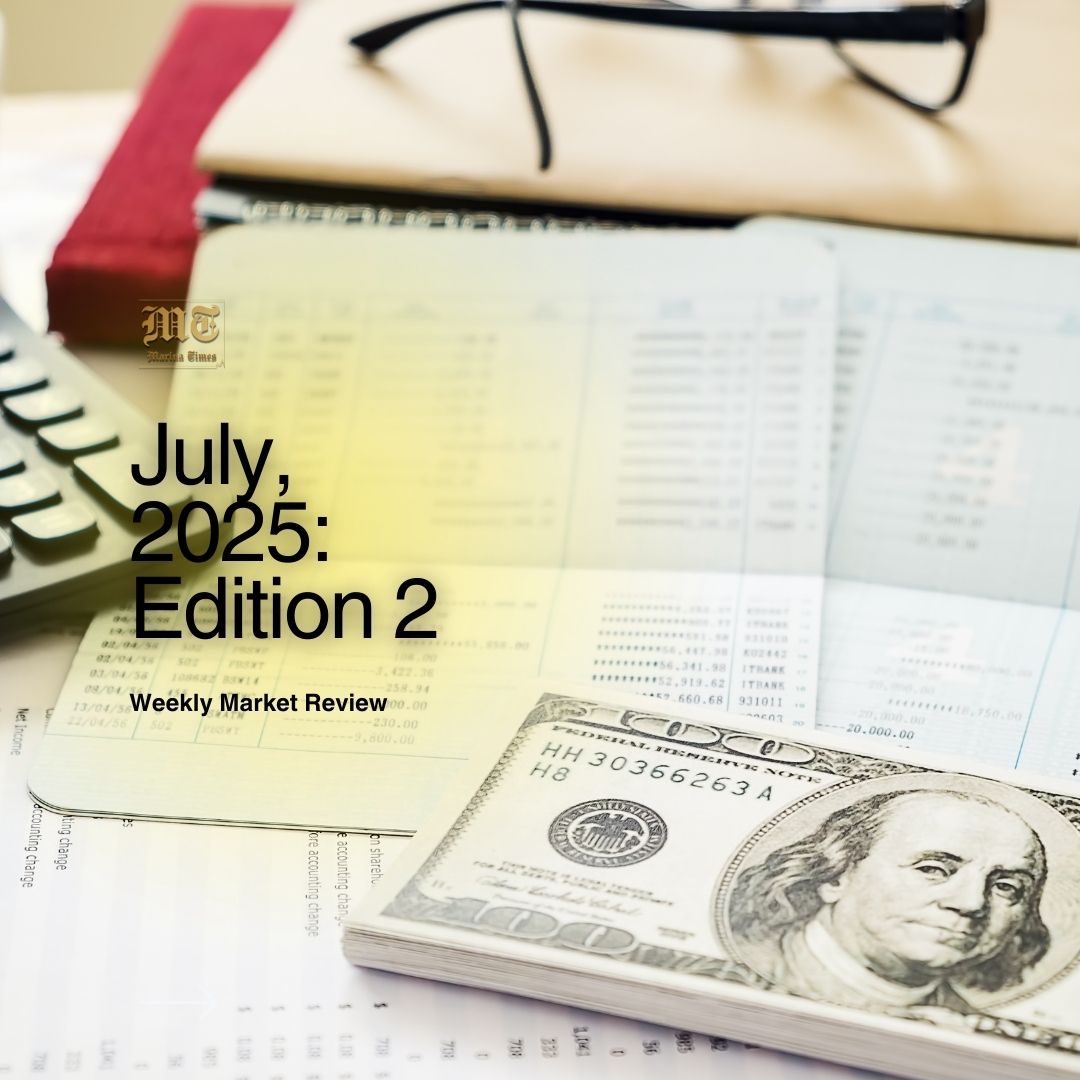

The Nigerian fixed income market witnessed heightened investor activity on Wednesday July 9th, 2025, as there was an abrupt Open Market Operation (OMO) conducted by the Central Bank of Nigeria, (CBN) to coincide with the pre-scheduled Primary Auction for Nigerian Treasury Bill (NTBs). The OMO auction marked aggressive bidding with investors displaying strong interest, particularly at the long end of the curve. The auction outcomes revealed a deliberate strategy by the apex bank to manage excess liquidity and concurrently shaping expectations around short-term rates.
The NTB auction on the other hand drew keen interest across tenors, with demand anchored by the search for higher returns amidst signs of easing inflation and improving macro fundamentals. Despite the aggressive bids, the Debt Management Office, (DMO) allotted below the initial offer size of ₦250 billion across the three tenors. Altogether, the July 9 auction underscored the market’s shifting sentiment, tilting from caution to cautious optimism.
In the week under review, the Nigerian financial system maintained a surplus liquidity position with notable fluctuations, particularly, there was a sharp mid-week deficit followed by a slight recovery on Thursday. The money market opened on Friday with a deficit of over ₦110 billion. Consequently, short-term borrowing rates changed during the week: the Overnight (O/N) rate closed at 30.08% while the Open Repo Rate (OPR) settled at 29.50%, up from the 27.00% and 26.50% levels they featured in the previous week. The Naira traded between a high of $/₦1,531.00 and a low of $/₦1,520.00 on Monday and closed at $/₦1,532.00 on Friday.
At the latest OMO auction, the CBN offered ₦300 billion across each tenor, but as usual, investor appetite was geared toward the (long tenure) 363-day instrument. Bids for the 363-day tenor peaked as high as ₦2.1 trillion (7x its offer size), leaving the 272-day OMO with a mere ₦45.00 billion in interest, which was not allotted, suggestive of the fact that either high yield bids were above policy comfort or that the auction was for liquidity control rather than a funding need. It was an obvious case of market preference for a slightly better risk-reward strategy. Strong bid interest for the longer-tenure bids reflected renewed investor confidence, likely driven by the attractive real returns (OMO yields vs. inflation), lower perceived currency risk over the 1-year horizon and institutional participation or FX-aligned investments.
Interestingly, despite the ₦600 billion aggregate offer, total sales climbed to ₦1.252 trillion (4x their offer), a testament to both the hunger for high yield in the market and the CBN’s deliberate overreach in its liquidity sterilisation threshold. The CBN, despite its restrained image, appears willing to soak up well beyond its initial target, a move likely aimed at curbing inflation, reducing naira liquidity, and easing pressure in the FX market.
To comment on stop rates, the shorter-dated paper was not allotted, mirroring the same trend observed at the last auction, suggestive of the CBNs unwillingness to accept bids above its rate tolerance at that tenor. In contrast, the longer-dated tenor, saw a steep reduction to clear at 21.99%, a notable 200bps decline from its previous stop rate of 23.99%. This reduction, with the cut-off rate settling near the lower bound of its bid range (21.80% – 23.19%), reinforces strong investor demand and growing confidence in duration positioning.
The outcome of the 9th July OMO auction is reflective of a tightening bias in the CBNs liquidity operations with the rejection of the short-term tenor and the oversubscribed and oversold longer-dated tenor.
TENOR | AUCTION DATE | OFFER (₦’ B) | BIDS (₦’ B) | RANGE OF BIDS (%) | STOP RATES (%) | PREVIOUS STOP RATES (%) | TOTAL SALE (₦’ B) |
272-DAY | 09-07-2025 | 300.00 | 45.00 | 22.4500-23.5000 | No Sale | 0.000 | No Sale |
363-DAY | 09-07-2025 | 300.00 | 2129.50 | 21.8000-23.1900 | 21.9900 | 23.9900 | 1252.36 |
At the most recent Nigerian Treasury Bills (NTBs) auction held on July 9, the DMO offered ₦250 billion across three tenors. The auction drew robust demand, with total subscriptions exceeding ₦1.33 trillion, reflecting continued investor appetite for risk-free assets amid a relatively volatile rate environment. Despite the high demand, the DMO stuck to its guns and allotted over ₦200 billion, with the bulk skewed toward the 364-day bill, with over ₦1.18 trillion in subscriptions and ₦126.31 billion allotted at a stop rate of 16.30%. The preference for longer tenor demand suggests investors are positioning for potential rate moderation, while the continually declining stop rates indicate that the government is not under funding pressure.
What followed was a strategic repricing of rates, by the DMO, the 364-day paper was the most affected. The 91-day and 182-day tenors fell by 206 and 215 basis points, respectively, while the 364-day tenor took the steepest dive, shedding 254 basis points. Final stop rates settled at 15.7400%, 16.2000%, and 16.3000% respectively, all down from their previous levels.
The bid range across all tenors witnessed less commotion when compared with the previous auctions, as the bids were between 16.00% and 20.03%. The calm in bid behaviour may suggest that market participants are aligning with the speculation of an expected level of 16.00% at the long end.
Despite high subscription levels, especially for the 364-day, the stop rates remained restrained, which appears to imply that the CBN is not hiking rates to match investor bids and investors are comfortable locking in lower rates, possibly due to expectations of declining inflation, interest rate moderation in the medium term, and improved fiscal outlook or a stronger naira.
We believe that this auction was less about government borrowing and more about correcting market expectations. The CBN’s decision to go light on supply combined with rate compression is suggestive of a coordinated attempt to keep short-term rates from overheating while gently guiding the market towards a more stable curve.
AUCTION DATE | 09-07-2025 | 09-07-2025 | 09-07-2025 |
ALLOTMENT DATE | 10-07-2025 | 10-07-2025 | 10-07-2025 |
MATURITY DATE | 09-10-2025 | 08-01-2026 | 09-07-2026 |
TENOR | 91-DAY | 182-DAY | 364-DAY |
OFFER (₦) | 100,000,000,000 | 20,000,000,000 | 130,000,000,000 |
SUBSCRIPTION (₦) | 105,069,835,000 | 44,273,586,000 | 1,180,345,561,000 |
ALLOTMENT (₦) | 59,841,437,000 | 15,668,960,000 | 126,307,310,000 |
RANGE OF BIDS (%) | 15.6400 – 20.0000 | 16.0800 – 18.5300 | 16.0000 – 20.0300 |
STOP RATES (%) | 15.7400 | 16.2000 | 16.3000 |
PREVIOUS STOP RATES (%) | 17.8000 | 18.3500 | 18.8400 |
The Nigerian fixed income market has witnessed a sudden and broad-based drop in yields across tenors, driven by a mix of strong demand, moderated inflation expectations, and improved system liquidity. The recent primary market auctions, particularly in NTBs and bonds, cleared at significantly lower stop rates, reflecting aggressive investor bidding and reduced risk premiums. Additionally, rate recalibrations by the CBN, including a less hawkish interest rate stance, have contributed to the downward repricing of rates. As investors price in a more stable macro-outlook, the yield compression also reflects expectations of sustained disinflation and a supportive monetary environment in the near term.
The Naira has appreciated notably in recent sessions, marking a significant revaluation from its previous lows. The Naira appreciation is largely attributed to increased FX supply from the CBN, renewed foreign inflows, and improved transparency in the FX market, particularly through the Nigerian Foreign Exchange Market (NFEM). The revaluation suggests that market participants are regaining confidence in the monetary authorities’ ability to maintain a flexible and market-reflective exchange rate regime. In addition, strengthening of the Naira also dampens imported inflation pressures, contributing to overall macroeconomic stability and easing the pressure on domestic interest rates.
Investor sentiment towards Nigeria has improved markedly, supported by clearer policy signals, fiscal reforms, and external reserve stabilization. Key reforms, such as the removal of fuel subsidies, convergence of FX windows, and tighter monetary policies, have restored credibility in Nigeria’s policy framework, triggering a modest return of foreign portfolio investors (FPIs) into fixed income and equity markets, as seen in the rising turnover and demand at recent auctions. The resurgence of market confidence is also underscored by the resilience of the equity market, which continues to record strong year-to-date gains, reflecting renewed investor belief in Nigeria’s medium-term growth story.
The liquidity of the Nigerian financial systems has been highly volatile over the past week. A significant strain was observed last Wednesday, with a huge shortfall of over ₦900 billion, due to major outflows from the OMO auction settlements. Despite intermittent recoveries on Thursday, liquidity slid back down on Friday to a deficit of over ₦110billion, suggesting ongoing pressure on system cash levels and CBNs deliberate action to manage system liquidity.
The Nigerian All-Share Index (ASI) posted a sustained upward trend in the second trading week of July. It had gained over 3,000 points in the week’s session, rising from 121,361.87 points on Monday, July 7 to 126,149.57 points on Friday, July 11, reflecting a 3.79% gain over the period. Reflecting strong bullish momentum and renewed investor confidence in the equities market.
Oil markets are experiencing renewed volatility. Brent crude briefly rose above $70 per barrel on July 9 before descending to around $69 by July 10. U.S. WTI followed a similar path, rising toward $69 midweek before retreating to about $67.03. The fluctuations come amid OPEC+’s unexpected output increase of 548,000 bpd for August, signalling confidence in global demand but also raising concerns of oversupply.
Notwithstanding geopolitical tensions in the Red Sea, attacks on oil vessels by Houthi rebels have reintroduced a risk premium. At the same time, President Trump’s confirmation of sweeping tariffs, including levies on Brazilian goods and copper imports, have rattled global trade sentiment, threatening to weigh on oil demand in the months ahead.
In essence, the price swings reflect a market caught between supply optimism and demand uncertainty. While near-term risks may support prices, any sustained move above $70 will likely depend on persistent geopolitical disruptions or a meaningful drawdown in global inventories.
Observing strategically, the auction results suggest that the CBN is signalling gradual rate moderation. With robust subscription levels and lower rate outcomes, market sentiment leans bullish on rates, perhaps in anticipation of a stable/reduced monetary policy stance, improved fiscal inflows, and FX market liquidity improvements.
We expect continued gradual disinflation where currency stability and reduced food price volatility persist. However, upcoming inflation data and any escalation in Trump-era tariff rhetoric could affect global risk sentiment, capital flows, and Nigeria’s imported inflation. The crypto markets seem to be pricing in a Powell exit and have concurrently delved further bullish. This trend may be offset by any indication or establishment that the independence of the Federal Reserve leadership is to remain sacrosanct.
The new stability of the naira this week is something to be proud of.
—
It has been on a winning streak, bouncing back from its past lows and stirring up a wave of renewed confidence.
—
The CBN has opened its doors wider to foreign currency. A steady flow of dollars now fills its vault, bringing calm to what used to be a volatile space.
—
This stability hasn’t gone unnoticed; interest is pouring in from afar. People from all corners are eager to get a piece of the pie. “Please, please,” they seem to shout, “save a bit for me!”
—
With the fresh influx of foreign investors and an honest foreign exchange system, the naira has finally found its feet! We’re back in business!
—
The naira now hums to a brighter tune, and our confidence begins to grow, but wait…
—
With all the hype, will it impact the common man on the street? Will he put on his shoes and dance, seeing the changes reflected on his grocery price? Or will it remain something he reads in the papers, twiddling his fingers while waiting for the real impact?
—
Only time holds the answer.
By: Sandra A. Aghaizu